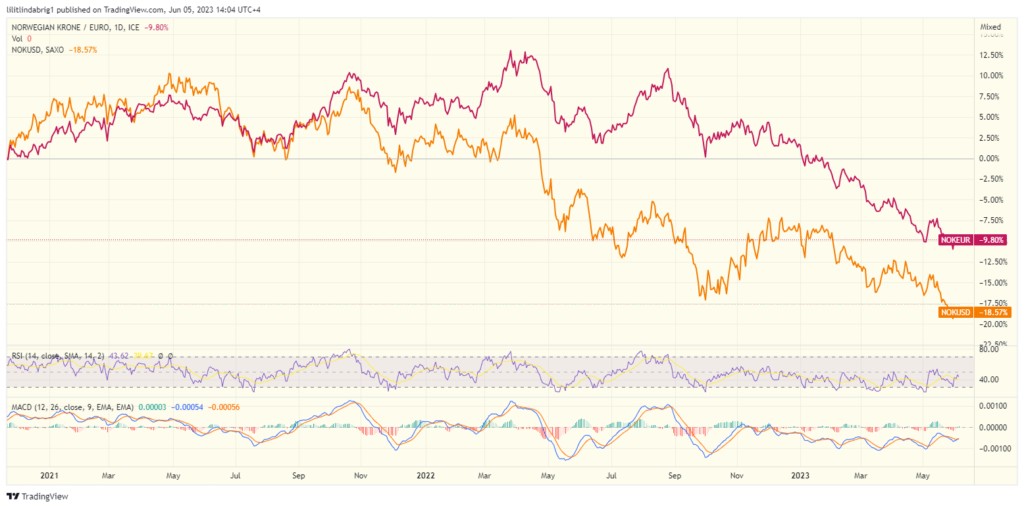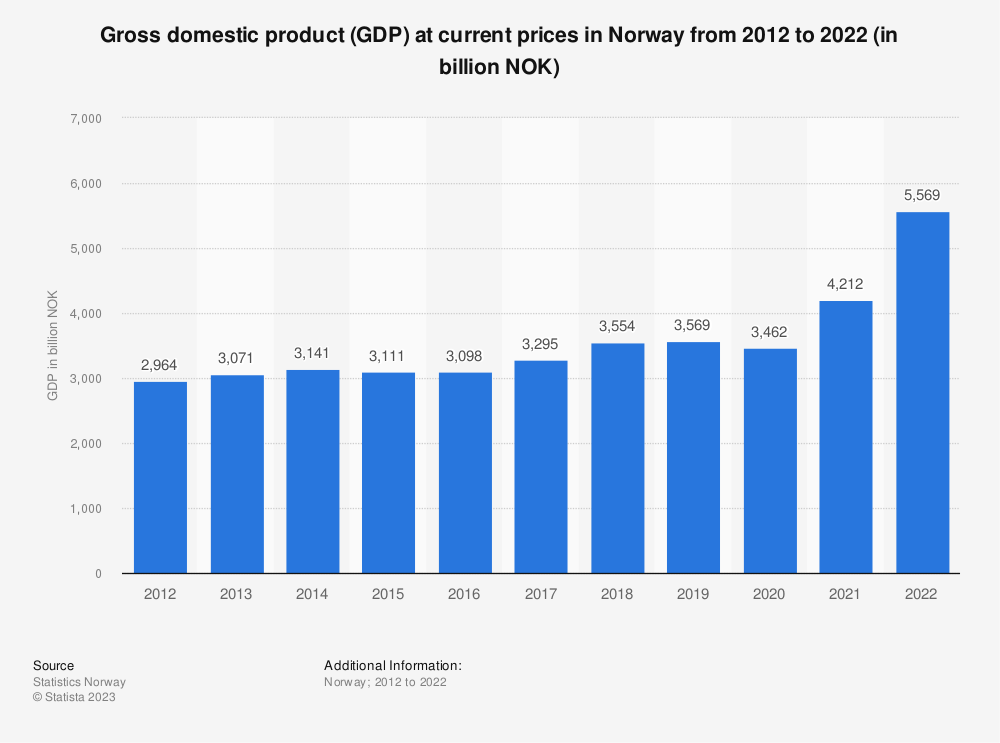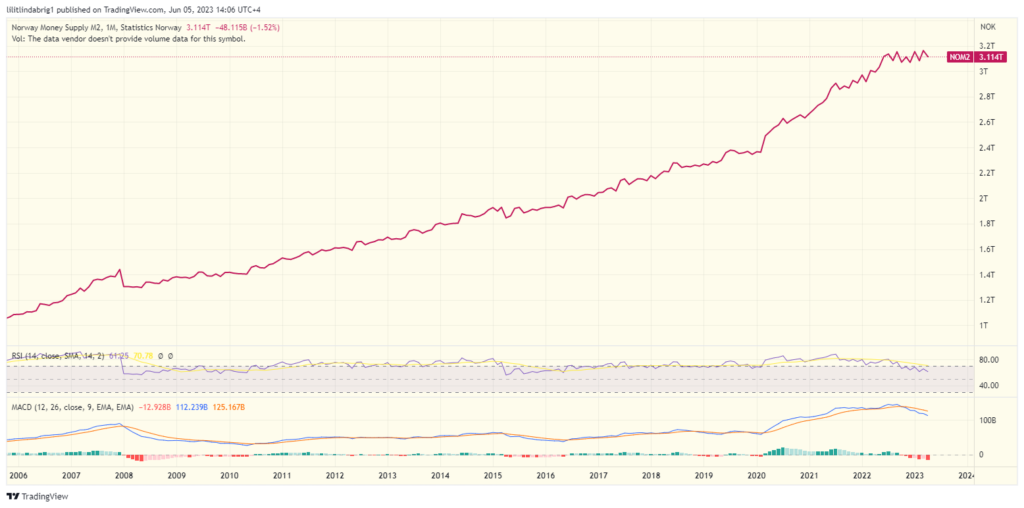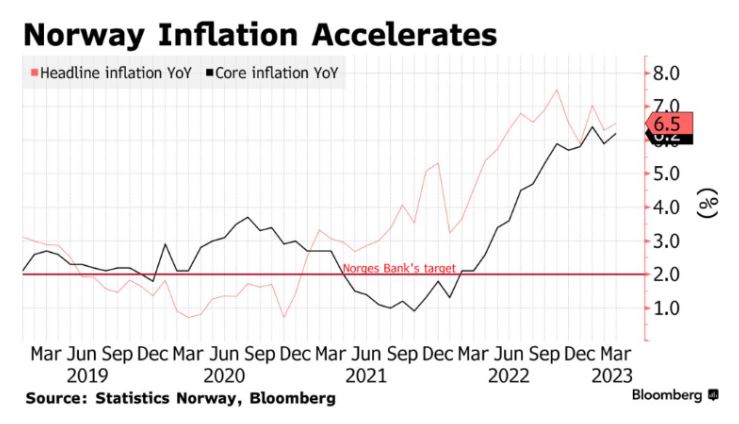
Key Takeaways:
- Analyst claims bogus monetary policy and centralization of power pushed NOK lower against the US dollar and the euro.
- The interest rate hikes continue in Norway, but so does the inflation.
- An expert says the Krone was not affected by the energy price yoyo in the previous two years.
- Did foreign investments undermine the domestic currency?
YEREVAN (CoinChapter.com) – Norwegian Krone (NOK) has declined 11% against the US dollar year-to-date, bringing the decade drop to 50%. The NOK/EUR exchange rate painted a similar picture, with an 8% decline since January 2023.

Meanwhile, Norway’s Gross Domestic Product (GDP) continued to rise, signifying the country’s economic strength.

This begs the question: what pushed NOK lower year-to-date?
Money Printer Behind NOK’s Plunge?
Rune Østgård, a financial analyst from Norway, recently wrote an open letter regarding the subject, pinpointing three main reasons behind the weak Krone. The centralization of power in the country and the expanding money supply were among the main culprits.
The graph below shows how the Norwegian money printer increased cash liquidity over the previous decade.

Norway has expanded the money supply as fast as if we are able to export inflation to other countries, which we aren’t, because the NOK isn’t the world’s reserve currency.
commented the analyst, citing the shortcomings of the monetary policy.
However, Norway’s hawkish determination to raise interest rates in the previous year did not contribute to NOK’s stabilization, albeit curbing the money supply increase.
Norway’s hawkish policies to the rescue
Swedish asset manager Chelton Wealth said Norwegian regulators pushed interest rates to 3% as of April 2023. The increase was below average among central banks overseeing the ten most traded currencies worldwide.

Notably, Norway’s central bank pulled off another 25 basis point rate hike on 4 May, which increased the policy rate to 3.25%. The policymakers also expect to do a similar hike in June, with a chance of another such move later in the year.
As a result of the inefficient battle against inflation, the latter has grown from its September 2021 bottom of around -1% to 6.4% in April 2023.

As financial analysts at Think ING concluded, macro factors have a firm grasp on NOK, and a recovery could be possible only in H2 2023.
A risk sentiment stabilisation would, in our view, still allow the krone to emerge as an outperformer in the G10 space, thanks to good fundamentals, a more attractive rate profile given the recent Norges Bank’s hawkish turn, and undervaluation.
commented the analysts.
Dropping energy prices affected Norwegian Krone? Not so much
Meanwhile, the macro factors include the energy crisis and the plunging oil prices. Norway is the world’s third-largest exporter of natural gas, behind Russia and Qatar. According to Norwegian Petroleum, the country has supplied between 20 and 25% of the EU and United Kingdom gas demand.

Nearly all oil and gas produced on the Norwegian shelf is exported. Combined, oil and gas exceeds half of the total value of Norwegian exports of goods. This makes oil and gas the most important export commodities in the Norwegian economy.
asserted the company.
Foreign investments weakened the NOK, analysts say
Meanwhile, Asset Allocation Strategist Willem Klijnstra noted the NOK’s relative independence from crude oil prices. He asserted that the energy money is not flowing into the Norwegian economy. Instead, it is saved in its sovereign wealth fund, which invests abroad.
Norges Bank, the central bank of Norway, then buys “large amounts of foreign currency to offset the high tax receipts from the energy sector,” commented the expert. Therefore, the net impact of energy prices on the Krone should be limited.
Also read: OPEC+ Wants Higher Oil Prices.
However, the “focus on the foreign currency purchases of the central bank” could have affected the domestic currency. Rune Østgård agreed with the outlook, calling foreign investments one of the main reasons behind the weak Krone.
We increasingly transform our valuable capital, which mainly is energy, from being domestic capital to capital used and invested abroad (two new electricity cables to UK and Germany, and the income from petroleum which is used to prop up a Sovereign Wealth Fund that only invests outside Norway).
noted Østgård.


